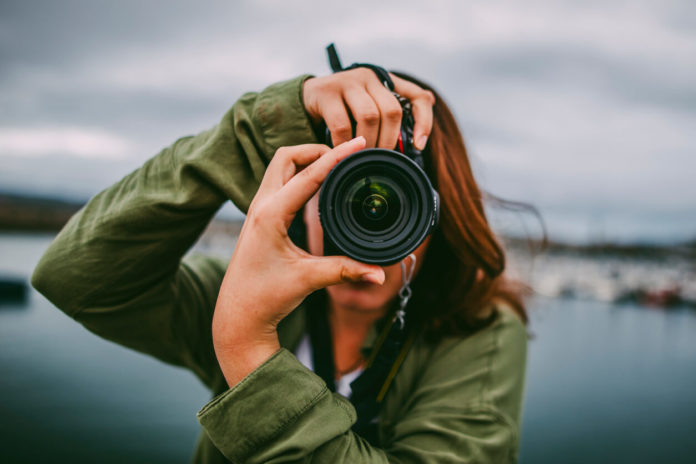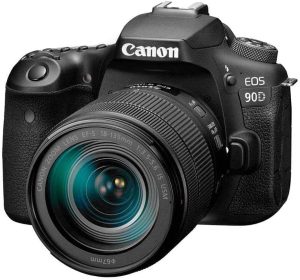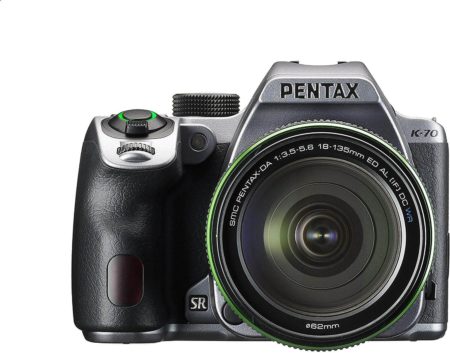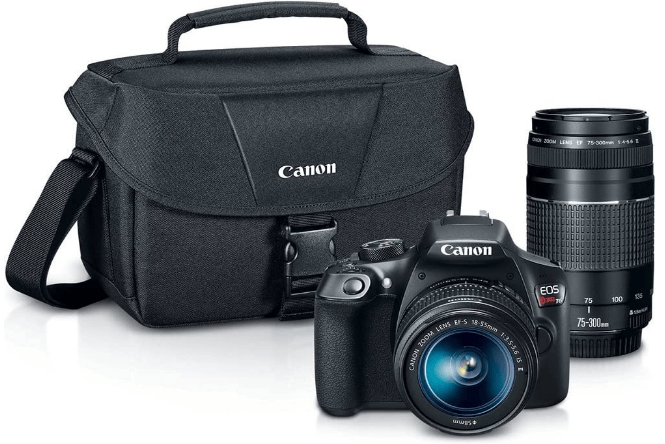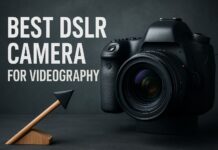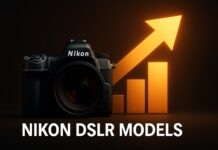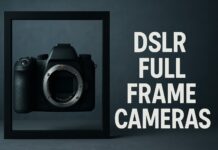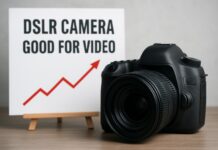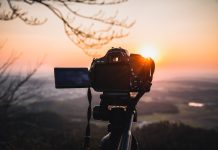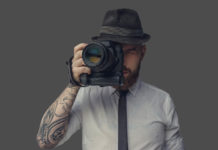Finding a DSLR camera under $1,000 in 2025 isn’t about settling for less – it’s about recognizing opportunity. The photography industry’s pivot to mirrorless has created a buyer’s market where excellent DSLRs sell at 40-60% discounts despite maintaining their capabilities. After shooting professionally with both budget and flagship DSLRs for over a decade, I can tell you that smart photographers are capitalizing on this moment.
The $1,000 budget represents the sweet spot where you access genuine enthusiast-grade cameras rather than compromised entry-level bodies. These aren’t toys – they’re serious photographic tools capable of professional results. This guide explains which models deliver exceptional value, which to avoid, and how to maximize your investment when mirrorless hype has distorted the market.
Contents
- Why DSLRs Under $1,000 Make Sense in 2025
- Understanding What You’re Buying: New vs Used vs Refurbished
- Top DSLRs Under $1,000: Expert Recommendations
- Best Overall: Nikon D7500 ($900 Body, $1,100 with 18-140mm)
- Best Value: Canon EOS 90D ($900-1,100 Body)
- Best Entry-Level: Canon EOS Rebel SL3/250D ($650-750 with Kit Lens)
- Best Budget Full-Frame: Canon EOS 6D ($700-900 Used)
- Best Beginner Value: Nikon D5600 ($700-850 with 18-55mm)
- Best Third-Party Option: Pentax K-70 ($650-800)
- Cameras to Avoid (Despite Good Pricing)
- DSLR vs Mirrorless: Making the Right Choice
- Lens Strategy: Where Your Money Actually Matters
- Essential Accessories: What to Buy Immediately
- What to Expect Long-Term
- Common Questions From Smart Buyers
- Final Buying Advice: Maximizing Your $1,000
Why DSLRs Under $1,000 Make Sense in 2025
The camera industry wants you to believe DSLRs are obsolete. The reality? Image quality hasn’t changed. A Canon 90D or Nikon D7500 produces files indistinguishable from cameras costing twice as much. What’s changed is pricing – you’re buying mature technology at clearance rates.
The strategic advantage of buying now:
DSLRs have stopped depreciating sharply. They’ve reached price floors where further drops are minimal. A D7500 selling for $900 today will be worth $800 in two years – modest depreciation for professional-capable equipment.
Compare this to mirrorless: buy a $1,500 camera today, and in two years it’ll be worth $900 as newer models arrive. You lose $600 in depreciation versus $100 with a DSLR.
What $1,000 actually buys:
- Weather-sealed bodies with professional build quality
- 20-32MP sensors delivering excellent image quality
- 7-10 fps continuous shooting for action
- 4K video capability (on current models)
- Advanced autofocus systems (51-point or better)
- Exceptional battery life (900-1,800 shots per charge)
Understanding What You’re Buying: New vs Used vs Refurbished
Your $1,000 budget goes significantly further in the used market. Understanding the trade-offs is critical.
New Camera Advantages
New cameras provide warranty coverage (typically 1 year), guaranteed zero wear, and latest firmware. However, $1,000 limits you to entry-level to mid-range bodies new.
Best new options under $1,000: Canon Rebel SL3/250D ($700), Nikon D5600 ($800), Canon 90D (occasionally on sale at $999).
Used Camera Strategy
$1,000 buys semi-professional used bodies that sold for $1,500-2,000 new. You’re accessing superior capability at entry-level pricing.
What to verify when buying used:
- Shutter count (under 50,000 actuations ideal for most DSLRs)
- Sensor condition (no scratches, minimal dust)
- Weather sealing integrity
- All buttons and dials functional
- LCD screen condition
- Included accessories (battery, charger, strap)
Trusted used sources: KEH Camera, MPB, B&H Photo used department, Fred Miranda forums. Avoid eBay unless the seller has extensive positive camera equipment feedback.
Refurbished: The Sweet Spot
Manufacturer-refurbished cameras combine used pricing with warranty coverage. Canon and Nikon’s refurb programs replace worn components and provide 90-day to 1-year warranties.
A refurbished D7500 or Canon 90D for $900-1,000 delivers exceptional value – professional capability with warranty protection.
Top DSLRs Under $1,000: Expert Recommendations
Best Overall: Nikon D7500 ($900 Body, $1,100 with 18-140mm)
The Nikon D7500 is the smartest $1,000 investment for enthusiast photographers. This camera delivers professional-grade performance at mid-range pricing.
Why it’s exceptional:
The 20.9MP sensor prioritizes image quality over pixel count. Larger pixels mean cleaner high-ISO performance – you’ll shoot usable images at ISO 6400 where entry-level cameras struggle at ISO 1600.
The 51-point AF system (inherited from Nikon’s pro cameras) locks focus reliably even in dim conditions (-3 EV). I’ve shot indoor events and night photography where this AF system performed flawlessly while cheaper cameras hunted endlessly.
Key specifications:
- 20.9MP APS-C sensor with excellent dynamic range
- 8 fps continuous shooting
- 4K UHD video (30fps, uncropped)
- 51-point AF with 3D tracking
- ISO 100-51,200 (expandable to 1,640,000)
- Weather-sealed magnesium alloy construction
- 950-shot battery life
- Tilting touchscreen
Real-world performance: The D7500 excels at everything except extreme low light (where the D750 wins). For sports, wildlife, events, travel, and general photography, this camera won’t limit you for years.
Who should buy it: Serious enthusiasts wanting professional capability. Photographers upgrading from entry-level cameras. Anyone needing speed, build quality, and excellent image quality.
Skip it if: You need full-frame sensor (different budget tier) or already own Nikon D7200 (incremental upgrade).
Best Value: Canon EOS 90D ($900-1,100 Body)
The Canon 90D is Canon’s APS-C flagship and a remarkable piece of engineering. The 32.5MP sensor provides incredible resolution – more than most full-frame cameras.
Why it’s outstanding:
32.5 megapixels means you can crop aggressively without quality loss. Photograph wildlife and crop to 50% of the frame – you still have 16MP images suitable for large prints.
The 10 fps continuous shooting with reliable AF tracking is exceptional. I’ve shot fast-moving subjects where the 90D kept pace admirably. Dual Pixel autofocus provides smooth video focusing – rare in DSLRs.
Key specifications:
- 32.5MP APS-C sensor
- 10 fps continuous shooting
- Uncropped 4K video at 30fps
- 45-point all cross-type AF
- ISO 100-25,600 (expandable to 51,200)
- Weather-sealed construction
- 1,300-shot battery life
- Articulating touchscreen
The trade-off: High resolution means larger pixels densely packed. High-ISO performance is good (not exceptional). At ISO 6400, the D7500’s images are cleaner. However, the resolution advantage often matters more.
Who should buy it: Wildlife photographers wanting maximum reach via crop factor. Photographers needing high resolution for cropping or large prints. Hybrid shooters needing both stills and video.
Skip it if: Low-light photography is your primary focus. The D7500 handles dim conditions better despite lower resolution.
Best Entry-Level: Canon EOS Rebel SL3/250D ($650-750 with Kit Lens)
The SL3 (called 250D internationally) is Canon’s smallest, lightest DSLR with 4K video. It bridges entry-level and enthusiast categories effectively.
Why it’s appealing:
The fully articulating touchscreen is genuinely useful – flip it forward for vlogging, tilt for ground-level shots, fold it against the body for protection. The interface is intuitive and beginner-friendly while offering enough manual control for skill development.
4K video at 24fps (with crop) plus 1080p at 60fps provides decent video capability. Dual Pixel autofocus during video recording is smooth and reliable – better than most DSLRs.
Key specifications:
- 24.1MP APS-C sensor
- 5 fps continuous shooting
- 4K video (24fps with crop)
- 9-point AF system
- ISO 100-25,600
- Plastic construction (no weather sealing)
- 1,070-shot battery life
- Fully articulating touchscreen
The limitations: Only 9 AF points means tracking moving subjects is challenging. Plastic build feels less substantial than metal bodies. No weather sealing means rain is problematic.
Who should buy it: Beginners wanting room to grow. Travel photographers prioritizing light weight. Content creators needing flip screen for vlogging. Anyone on a tight budget wanting Canon quality.
Skip it if: You shoot action photography (inadequate AF). You need weather-sealed durability. You’ll outgrow entry-level cameras quickly.
Best Budget Full-Frame: Canon EOS 6D ($700-900 Used)
The original Canon 6D (not Mark II) occasionally appears under $1,000 used. This is Canon’s entry-level full-frame DSLR featuring a 20.2MP sensor and excellent image quality.
Why full-frame matters:
Full-frame sensors provide superior low-light performance and shallower depth of field at equivalent apertures. The 6D shoots clean images at ISO 6400 that rival APS-C cameras at ISO 1600.
For portrait photographers wanting beautiful background blur or anyone prioritizing low-light capability, the 6D’s full-frame sensor is transformative.
Key specifications:
- 20.2MP full-frame sensor
- 4.5 fps continuous shooting
- 1080p video
- 11-point AF (central point to f/2.8)
- ISO 100-25,600 (expandable to 102,400)
- Weather-sealed magnesium construction
- 1,090-shot battery life
The trade-offs: Only 11 AF points (adequate for portraits, limiting for action). No 4K video. Slower continuous shooting than APS-C cameras.
Who should buy it: Portrait and wedding photographers. Anyone transitioning to full-frame. Photographers prioritizing image quality over speed.
Skip it if: You shoot sports or wildlife (AF limitations). You need 4K video. You require fast continuous shooting.
Best Beginner Value: Nikon D5600 ($700-850 with 18-55mm)
The D5600 offers excellent value for beginners wanting a capable camera that won’t be quickly outgrown. It provides solid image quality and useful features at accessible pricing.
Why it’s good for learning:
The fully articulating touchscreen makes the D5600 intuitive for smartphone users. The 39-point AF system is adequate for general photography. The camera produces excellent 24.2MP files with good dynamic range and clean high-ISO performance up to ISO 3200.
Battery life (970 shots) means you’ll rarely worry about charge level during day-long outings.
Key specifications:
- 24.2MP APS-C sensor
- 5 fps continuous shooting
- 1080p video (no 4K)
- 39-point AF system
- ISO 100-25,600
- Plastic construction
- 970-shot battery life
- Fully articulating touchscreen
The limitations: No 4K video. Plastic build feels less premium. Slower than D7500 for action photography.
Who should buy it: Beginners committed to learning photography. Anyone wanting Nikon image quality at entry-level pricing. Casual photographers prioritizing ease of use.
Skip it if: You need 4K video. You shoot fast action regularly. You want professional build quality.
Best Third-Party Option: Pentax K-70 ($650-800)
The Pentax K-70 deserves consideration if you’re willing to explore beyond Canon/Nikon. Pentax offers features rarely found in this price range.
What makes Pentax different:
In-body image stabilization (rare for DSLRs) works with any lens. The K-70 is fully weather-sealed and dustproof – exceptional durability at this price. The unique Pixel Shift Resolution mode captures four images and combines them for exceptional detail.
Key specifications:
- 24.2MP APS-C sensor
- 6 fps continuous shooting
- 1080p video
- 11-point AF system
- 5-axis in-body stabilization
- ISO 100-819,200
- Full weather sealing
- Tilting LCD
The catch: Pentax’s lens selection is smaller than Canon/Nikon. Third-party support is limited. Autofocus is slower than competing models.
Who should buy it: Outdoor photographers needing weather sealing and IBIS. Anyone wanting unique features at budget pricing. Photographers comfortable with smaller lens ecosystems.
Skip it if: You need fast AF for action photography. You want maximum lens selection. You prefer mainstream brands.
Cameras to Avoid (Despite Good Pricing)
Canon EOS 4000D / Rebel T100
While cheap ($400-500), the 4000D makes too many compromises. No RAW format support means limited post-processing flexibility. The 9-point AF and 3 fps shooting severely limit capability. You’ll outgrow this camera within months.
Skip unless: Budget is absolutely critical and you understand you’re buying a stepping stone.
Canon Rebel T6
The T6 is outdated technology. For similar money, the T7 or SL3 provide superior features and capability. No reason to buy the T6 in 2025.
Very Old Models (D3200, T3i, etc.)
Cameras from 2011-2014 feel dated. Menu systems are clunky, LCD screens are low-resolution, and high-ISO performance is poor by modern standards. Your $700 buys significantly better used cameras from 2017-2019.
DSLR vs Mirrorless: Making the Right Choice
This debate matters less than camera companies suggest. Both produce excellent images. The differences are mostly operational.
DSLR Advantages
Battery life crushes mirrorless: 900-1,800 shots per charge versus 300-500 for mirrorless. For event photography, travel, or all-day shooting, this is transformative.
Optical viewfinders have zero lag: What you see is exactly what’s happening with no electronic delay. For fast action, this matters.
Mature lens ecosystem: Decades of lens production mean excellent used glass at bargain prices. F-mount and EF lenses flood the used market.
Proven reliability: DSLRs have 10+ year track records. You know they last.
Mirrorless Advantages
Eye autofocus is genuinely better: For portrait photographers shooting wide-open, mirrorless eye-AF is superior.
Electronic viewfinder shows exposure preview: What you see is what you get, including exposure simulation.
Silent electronic shutters: Completely silent shooting for events where shutter noise is problematic.
Smaller and lighter: Mirrorless bodies weigh less and pack smaller (though lenses often negate this advantage).
The Decision for $1,000 Buyers
Choose DSLR if you:
- Value battery life and reliability
- Shoot events, weddings, or travel
- Want maximum value per dollar
- Already own compatible lenses
- Prioritize proven technology
Choose mirrorless if you:
- Shoot portraits with ultra-fast lenses (eye-AF helps)
- Need cutting-edge video with AF tracking
- Prioritize size and weight above all
- Want the latest technology
For most photographers on $1,000 budgets, DSLRs deliver better value. Spend the $300-500 savings on quality lenses – that’s where image quality actually improves.
Lens Strategy: Where Your Money Actually Matters
The camera body matters less than the lens attached to it. A $900 D7500 with a $125 50mm f/1.8 prime produces dramatically better images than a $1,500 mirrorless with an $80 kit lens.
Smart First Lens Purchases
Canon shooters:
- EF 50mm f/1.8 STM ($125) – Sharp, fast, affordable
- EF-S 24mm f/2.8 STM ($150) – Excellent walkaround prime
- EF-S 55-250mm IS STM ($300) – Great budget telephoto
Nikon shooters:
- AF-S 35mm f/1.8G DX ($200) – Perfect normal prime for APS-C
- AF-S 50mm f/1.8G ($215) – Classic portrait lens
- AF-P 70-300mm VR ($350) – Affordable telephoto reach
Buy the body with a basic kit lens, then immediately add a fast prime (f/1.8). The image quality improvement is dramatic – sharper optics, beautiful background blur, excellent low-light capability.
Essential Accessories: What to Buy Immediately
Spare Battery ($40-60): Mandatory. Batteries die at the worst moments. Buy official manufacturer batteries – third-party batteries fail unpredictably.
Quality SD Card ($25-40): SanDisk Extreme Pro 64GB UHS-I minimum. Cheap cards corrupt images and cause camera lockups.
Camera Bag ($30-80): Protect your investment. Padded compartments prevent damage, weather-resistant material handles unexpected rain.
Lens Cleaning Kit ($15): Rocket blower, microfiber cloth, lens pen. Dust and fingerprints degrade image quality.
Screen Protector ($10): Protects LCD from scratches. Cheap insurance for expensive equipment.
What to Expect Long-Term
A well-maintained DSLR under $1,000 provides 5-10 years of excellent service. The D7500, Canon 90D, and similar cameras are built to last.
Typical lifespan:
- Shutter mechanism: 100,000-200,000 actuations (most users never reach this)
- Battery: 3-5 years before capacity degradation ($60 replacement)
- Sensor: Indefinite with proper care (annual cleaning $75)
Maintenance recommendations:
- Professional sensor cleaning annually
- Firmware updates when available (improves performance)
- Use quality memory cards exclusively
- Avoid extreme temperature storage
- Clean lens contacts periodically
Common Questions From Smart Buyers
Should I buy new or used for $1,000?
Used from reputable sellers (KEH, MPB, B&H) provides better value. Your $1,000 buys semi-professional used bodies versus entry-level new cameras. Verify shutter count and condition, but don’t fear used equipment.
Is a DSLR a bad investment in 2025?
No. Image quality hasn’t changed. A D7500 produces files identical to when it launched in 2017. The camera’s capabilities haven’t diminished – only the hype has shifted. For $1,000 buyers, DSLRs represent exceptional value.
How long until DSLRs are unsupported?
Nikon and Canon will support current DSLRs with parts and service for 10+ years minimum. Film cameras from the 1980s still receive service. Don’t worry about support disappearing.
What about lens availability as manufacturers focus on mirrorless?
The used F-mount and EF lens market is massive and will remain so for decades. Manufacturers stopped producing new mount lenses but existing glass remains available and affordable.
Should I wait for better deals?
DSLR pricing has stabilized. You won’t see dramatic price drops – these cameras have found their value floor. Waiting risks missing opportunities as remaining stock sells.
Can I use my DSLR with new mirrorless lenses?
Only with adapters, which add bulk and complexity. DSLRs work best with native F-mount or EF glass.
Final Buying Advice: Maximizing Your $1,000
The perfect $1,000 setup:
$850 – Nikon D7500 or Canon 90D body (refurbished or good used)
$125 – Fast prime lens (50mm f/1.8 or 35mm f/1.8)
$25 – Quality SD card
This combination delivers professional-capable images for a fraction of mirrorless costs. The D7500 or 90D won’t limit your photography for years. The fast prime lens teaches you better composition and lighting while producing dramatically better images than kit lenses.
Alternative budget allocation:
$700 – Canon SL3 or Nikon D5600 new (with warranty)
$200 – Two prime lenses (50mm + 24mm or 35mm)
$100 – Spare battery, cards, bag, accessories
This setup provides reliability (new camera warranty) plus excellent glass for learning.
The critical insight: Photography skill matters infinitely more than camera technology. A photographer with 5 years experience shooting a $700 D5600 produces better images than a beginner with a $3,000 mirrorless camera.
Your $1,000 buys cameras completely capable of professional work. The limitation isn’t the equipment – it’s user skill. Invest in your camera, invest more in lenses, then invest most in learning.
Buy smartly. Learn continuously. Make photographs.
Last update on 2025-12-27 / Affiliate links / Images from Amazon Product Advertising API


